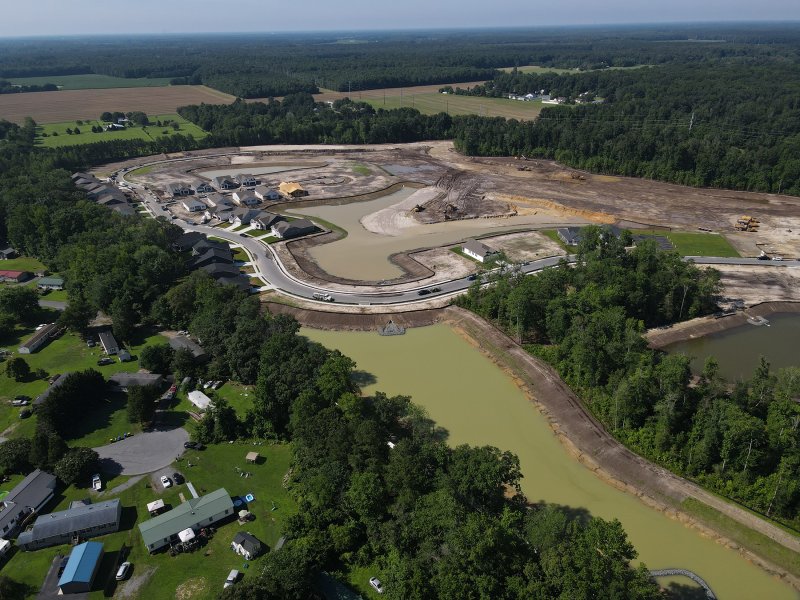As a panel reviewing Sussex County land-use regulations nears completion of its work, it seems clear it will recommend a shift from the by-right maximum of two units per acre that has fueled housing sprawl in recent years.
The zoning ordinance from the 1970s was the point of least resistance for developers during a housing boom that has lasted years, as retirees flocked to the county for low taxes and beach community living.
Housing developments that were constructed to fill the demand replaced forests and farmland, burdening roadways, schools, emergency services, medical service providers and the environment.
The Sussex County Land-Use Reform Working Group was formed earlier this year to suggest changes. It is considering 24 recommendations, including an emphasis on creating growth zones where development of various housing options would be encouraged in greater density. There would be incentives for development in those areas and preservation in rural areas.
Suggestions will be submitted to Sussex County Council for consideration.
Eight tentative recommendations to support farmland and preserve natural features were discussed at the group’s July 10 meeting. They are:
- Adjust AR-1 zoning outside growth areas: reduce base density to one unit per acre outside growth areas and retain two units per acre inside
- Increase open-space requirements and remove minimum lot sizes in clusters. Increase open-space requirements in subdivisions outside growth areas in cluster and non-cluster developments, and reduce or eliminate minimum lot sizes in cluster developments to support compact development and meaningful preservation
- Tree preservation – this could include replacing lost trees outside the growth area
- Require naturalized stormwater basins in preserved open space. Work with Sussex Conservation District to promote such features, which would include native plantings and ecological integration
- Refocus subdivision design around conservation priorities in agricultural-residential zones. That would require cluster subdivisions outside growth areas
- Support working farms through permitted agricultural support uses. Permit agricultural support uses by right on active farms outside growth areas. These include processing facilities, repair shops and farm stands, with performance standards to mitigate effects
- Create master plan zoning ordinance for large-scale developments. Complete adoption of the drafted master plan zone ordinance to enable coordinated, mixed-use and infrastructure-supported developments that align with county goals. This can help guide large-scale development through a phased comprehensive plan-aligned process
- Explore a transfer of development rights program. Allow voluntary transfer of development rights from conservation-property areas to designated growth zones.
“I think it’s an important distinction that we consider inside growth area versus outside growth area when we’re coming up with these policies,” said Mike Riemann, a representative of the American Council of Engineering Companies. “Because I do think some of these will vary, to a degree, because we want … to promote preservation in certain areas and we want to promote growth in others.”
Group member Christophe Tulou, executive director of the Delaware Center for the Inland Bays, said an emphasis on preserving trees and a broad view of protecting the environment are required.
“Existing trees are about 1,000 times more valuable than a replacement tree that you would put in its place,” Tulou said. “Certainly our bays suffer every time a tree disappears, a wetland is paved over. As a matter of fact, as anything is paved over. We take the sponge and we put a crust over the top of it, and so as a result of that, we just have a whole lot of potential problems in our watershed with the pollution that’s carried into the waterways.”
Jay Baxter, a Sussex Farm Bureau representative, said county rules have encouraged clear-cutting trees, and he believes new rules must protect old-growth forests.
While some of the draft recommendations suggest reviewing issues and possible programs, Riemann said Sussex County Council needs specific ideas.
“I don’t feel like we’re doing our job if we just lead with, ‘evaluate this’ or ‘study that,’” he said.
The working group had considered 10 other tentative recommendations at its June 12 meeting, and another four were drafted afterward. They are:
- Explore the alignment of the future land-use map with updated state investment strategy
- Comprehensive rezoning
- Standards for rezoning countywide
- Define “missing middle” housing types, such as duplexes and townhomes, which are cheaper to build and purchase
- Permit missing middle housing by right
- Reduce bulk and setback standards for missing middle housing
- Increase maximum building heights
- Increase multifamily housing in strategic areas
- Modernize the CR-1, commercial residential, zone to support mixed-use residential corridors
- Establish a process for phasing coordination of transportation improvements
- Allow greater building lengths for multifamily or townhouse developments
- Establish criteria to determine how and where growth zones should be located
- Allow increased density and lot size reductions in growth areas
- Evaluate Sussex County Rental Program to determine if change is needed.
“I think these recommendations are starting to coalesce into a package of changes that will hopefully direct development in a different way than it’s been happening in Sussex County to date,” said David Edgell, director of the Office of State Planning Coordination. Edgell serves on the 10-member working group.
Kevin Conlon came to the Cape Gazette with nearly 40 years of newspaper experience since graduating from St. Bonaventure University in New York with a bachelor's degree in mass communication. He reports on Sussex County government and other assignments as needed.
His career spans working as a reporter and editor at daily newspapers in upstate New York, including The Daily Gazette in Schenectady. He comes to the Cape Gazette from the Cortland Standard, where he was an editor for more than 25 years, and in recent years also contributed as a columnist and opinion page writer. He and his staff won regional and state writing awards.
Conlon was relocating to Lewes when he came across an advertisement for a reporter job at the Cape Gazette, and the decision to pursue it paid off. His new position gives him an opportunity to stay in a career that he loves, covering local news for an independently owned newspaper.
Conlon is the father of seven children and grandfather to two young boys. In his spare time, he trains for and competes in triathlons and other races. Now settling into the Cape Region, he is searching out hilly trails and roads with wide shoulders. He is a fan of St. Bonaventure sports, especially rugby and basketball, as well as following the Mets, Steelers and Celtics.

















































